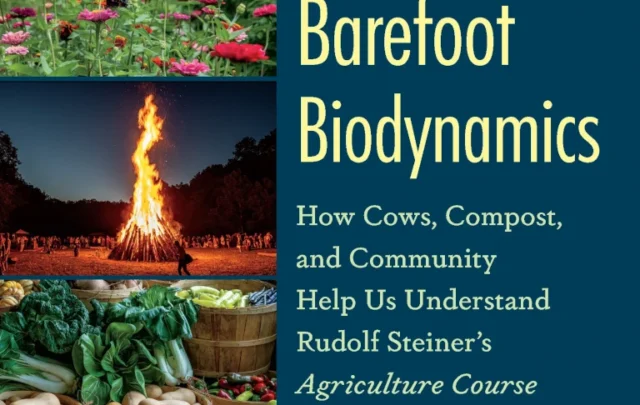Click on the headline (link) for the full text.
Many more articles are available through the Energy Bulletin homepage
Urban Farming ‘Mushrooms’ During Recession
Sara Luckow, The Media Consortium
Americans have picked up some interesting habits thanks to the Great Recession. Online dating is on the rise because it’s cheaper to vet a date online than pay for a night on the town. Interest in urban farming and community gardening has also spiked, but for different reasons: Home-grown foods taste better, cost less, and are better for you.
While technology has made online dating easy, urban agriculture has a tradition of mushrooming during the tough times. During World War II, Eleanor Roosevelt inspired millions by planting the first Victory Garden. That tradition continues today: Michelle Obama planted an organic vegetable garden on the White House Lawn.
But urban gardening isn’t just for the movers and shakers. And it’s not always easy to get a garden in the ground, no matter how clear-cut the benefits are. As Todd Heywood of the Michigan Messenger reports, residents of Flint, Michigan are appropriating abandoned lots as community gardens, but are running into some big problems in the process. Flint has no zoning laws that allow for urban agriculture, which makes the legality of these guerrilla gardens questionable at best. The city council will review proposals to update zoning ordinances in September, but Flint’s troubles are a good example of how, even if urban agriculture seems like a practical solution, it’s not always feasible.
…In an interview with Grist, food writer and urban farmer Novella Carpenter defines urban farming as ‘growing enough food to trade or sell for added income. Food security and financial savings are big motivators to plant a plot of land, even if it’s just to feed one household.
The popularity of community gardens will likely fall when the economy rebounds, Carpenter says, much like the 20 million World War II victory gardens that disappeared after the troops returned home and convenience foods because ubiquitous. That’s because sustaining a, well, sustainable land plot takes a lot of energy, planning and dedication.
But attempting to eat locally and seasonally can be frustrating if you live in a climate with a short growing season. Finding locally-grown tomatoes during a North Dakota winter is out of the question. But Tom Philpott offers a solution: Investing in technology and infrastructure “can dramatically extend growing seasons in almost any climate.”
(22 July 2009)
Sent in by EB contributor Kalpa as part of her weekly roundup of food & agriculture news on her blog. See her comments and the rest of her stories here. -KS
Season Extension Techniques: Cheap and Dirty Options
Sharon Astyk, Casaubon’s Book
I want a greenhouse. No, I want a glasshouse, a true British style Orangerie and succession houses (and, of course, the extensive grounds to accompany it, and the private fortune, as long as we’re dreaming). I dream of wandering in winter into tropical glory, and plucking ripe grapefruit from the trees for my breakfast, while the scent of jasmine permeates my senses.
…I mention all these things I *don’t* have because I think it is important to realize how even in many quite cold climates, it is possible to use very simple, very low cost strategies to extend your season. Despite all these things that I don’t have, let me tell you what I do have:
– I have fresh green vegetables grown by us from March to December or January, every single year. This is in upstate NY, where our winter lows hit -30. First frost is early October, last is usually late May.
– I overwinter produce every single year, including both hardy root crops and greens like kale, spinach, leeks, etc…
– I have two lemon, one keffir lime and one orange tree, a fig and a pomegranete, along with many smaller tender plants.
– I have fresh things of high nutritional value to eat all year round, produced here.
– I start virtually every single one of my seedlings here, in the house, and use only a couple of hanging lights. I use no lights in overwintering my tender plants.
– I have nursery beds for starting hundreds of perennials, fruits trees and berries over the winter.
I mention all this to give people a sense of what is possible with very little effort or input. My tools for doing this include:
– Two “pop up” greenhouses (ie, they can be set on top of a raised bed or flat crops, one little stand up greenhouse (ie, a plastic cover over a plant rack that sits on a porch.
– Self-watering containers on a poorly insulated sun porch
– some greenhouse plastic and old window frames and some floating row covers
– Lotsa mulch and bales of hay
– My unheated, uninsulated garage
– A couple of south facing windows
– Willingness to experiment
(21 July 2009)
Finding fulfilment through farming
Hiroyo Hasegawa, The Ecologist
The global economic crisis that began with the collapse of US securities house Lehman Brothers in 2008 also triggered a series of business failures and job losses in Japan. The nation was already facing a number of problems: while many are quitting their jobs early, young people are still having trouble finding their own. Energy and food self-sufficiency is low, at four per cent and 40 per cent respectively. It has a rapidly aging society and farming population, with more than two-thirds of farmers aged over 65. Moreover, the number of people with mental health problems is growing rapidly, and more than 30,000 people commit suicide each year.
But there is light at the end of the tunnel, particularly in a new lifestyle with the potential to reduce or resolve these problems, and to help the nation realise a more attractive and diverse future, which is quietly becoming popular.
…First proposed in the mid-1990s by Naoki Shiomi, the Half-Farmer/Half-X (HF/HX) lifestyle means people growing their own food while at the same time being constructively involved in society by realising their own personal passion – the ‘X’ in the equation.
…Abandoning the 20th-century style of mass production, mass consumption, mass disposal and long-distance transportation, HF/HX points the way to happier lives and a more sustainable world.
Living the HF/HX lifestyle back in his rural hometown of Ayabe, Shiomi has discovered that less money and more spiritual enrichment results in contentment. Numbers have increased nationwide in recent years. HF/HXers are content with their lives, consuming less and so finding less need to consume. In addition, because agriculture is part of their daily lives, they cannot help but shift their focus to the natural world. They soon develop what Rachel Carson called a ‘sense of wonder’ in their environment.
This is an edited version of a longer article that appeared in the Japan for Sustainability (JFS) Newsletter No.80 (April 2009)
(23 July 2009)
While initially sounding a bit too good to be true perhaps (I am sure it is not all nonstop contentment and sense of wonder, certainly not in my garden!) this idea sounds like it would hold potential for “transitioning” lifestyles. -KS





